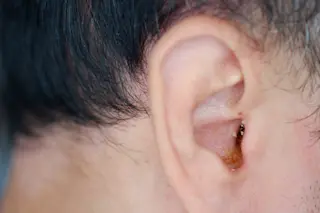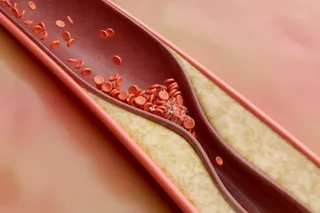Earwax isn’t exactly the most appealing part of our bodies, but it may be an effective tool to detect Parkinson’s disease. Scientists are now taking a closer look inside ears to seize a valuable substance called sebum, a major component of earwax.
A study recently published in Analytical Chemistry has shown that sebum could be a telling sign of Parkinson’s disease, all because of a distinct smell it gives off in those diagnosed with the disease. While current methods of Parkinson's screening — such as clinical rating scales and neural imaging — can be costly, tests with sebum could offer an inexpensive alternative.
The Progressive Symptoms of Parkinson's
As a progressive neurodegenerative disease, Parkinson’s requires early intervention to ensure the best care possible. The disease causes deterioration of nerve cells in the brain, a process that sets off a series of worsening symptoms.
The disease starts with mild symptoms that generally don’t hinder daily activities: slight movement problems, tremors, stiffness, or impaired balance. Then, as it worsens over time, more debilitating symptoms begin to arise, difficulty walking and talking chief among them. Parkinson’s is categorized into five stages, with stage 5 characterized by the most severe impairments that require around-the-clock assistance.
According to the Parkinson’s Foundation, an estimated 1.1 million people in the U.S. are living with Parkinson’s, and that number is expected to rise to 1.2 million by 2030. In addition, about 90,000 people in the U.S. are diagnosed with the disease every year.
Read More: Could Your Smartwatch Help Diagnose Parkinson's Earlier?
The Significance of Earwax
The need to detect Parkinson’s is more urgent than ever, and earwax — made mostly of sebum — may be an inexpensive resource to make early treatment possible.
Previous research has already established a link between sebum and Parkinson’s. The oily substance is not just found in our earwax, but also comes from sebaceous glands all across our skin — it’s particularly abundant on the forehead and upper back. Sebum’s function is to help our skin retain moisture, but it also possesses an extra quirk in those with Parkinson’s.
Sebum in people with Parkinson’s has a unique smell due to the disease's progression altering the volatile organic compounds (VOCs) it releases. These changes are produced by neurodegeneration, system inflammation, and oxidative stress, according to a statement on the recent study. This means sebum could be a potential biomarker for the disease. In rare cases, some people may even be able to sniff out Parkinson's early on; one 2019 study identified a woman as a “Super Smeller” since she had noticed a change in her husband’s body odor before he was diagnosed with Parkinson’s.
Sebum on skin, however, can be altered by environmental factors like air pollution and humidity, complicating its role as a biomarker. The researchers involved with the study recognized that the ear canal would therefore be the perfect sebum source, as the substance would be protected from the elements.
Swabbing for Biomarkers
To find VOCs in sebum associated with Parkinson’s, the researchers swabbed the ear canals of 209 human subjects (108 of whom were diagnosed with the disease). Analyzing the wax with gas chromatography and mass spectrometry techniques, they found four VOCs that were different in those with Parkinson’s compared to those without the disease: ethylbenzene, 4-ethyltoluene, pentanal, and 2-pentadecyl-1,3-dioxolane.
The researchers then created an artificial intelligence olfactory (AIO) system using the earwax VOC data. The model was able to distinguish earwax samples from people with and without Parkinson’s with 94 percent accuracy. The researchers say that the success of the AIO model could warrant a new screening tool to detect Parkinson’s in its early stages.
Moving forward, the researchers plan to conduct further research on different stages of Parkinson’s and focus on various ethnic groups to determine if these ear wax tests could truly be a reliable screening method.
This article is not offering medical advice and should be used for informational purposes only.
Read More: Living Close to a Golf Course Could Increase Risk of Parkinson’s Disease
Article Sources
Our writers at Discovermagazine.com use peer-reviewed studies and high-quality sources for our articles, and our editors review for scientific accuracy and editorial standards. Review the sources used below for this article:
Analytical Chemistry. An Artificial Intelligence Olfactory-Based Diagnostic Model for Parkinson’s Disease Using Volatile Organic Compounds from Ear Canal Secretions
NUH. Parkinson's Disease
Parkinson's Foundation. Statistics
UCLA Health. Sebum smell could be a biomarker for Parkinson's disease
PubMed. Discovery of Volatile Biomarkers of Parkinson’s Disease from Sebum















